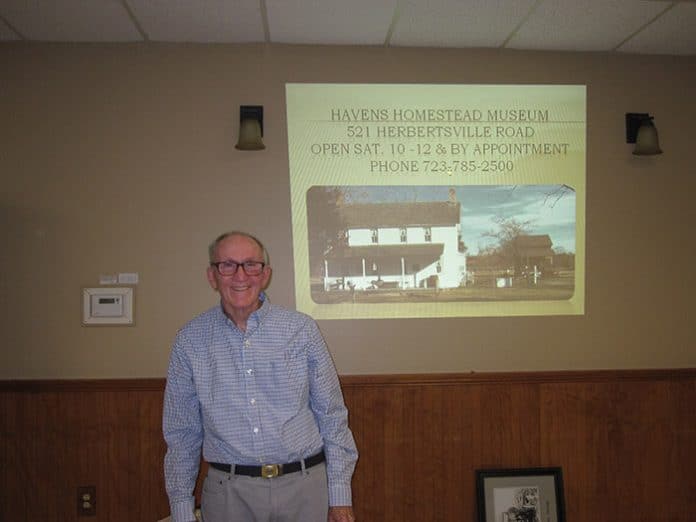
BRICK – The Brick Township Historical Society recently had a special guest speak at their June 12 meeting when Township Historian Gene Donatiello gave a presentation on “Historic Homes of Brick Township.”
“The construction of the older homes was ‘post and beam,’ which was joined together with mortise and tenon joints. There were no saw mills in the area then, so the wood was sawed by hand,” said Donatiello.
He also showed photos of historic homes still standing throughout the township, providing the history of the homes and the people within them.
The first was the home of Joseph Brick, located in Howell Township. Brick, who passed away in 1947, lived in a time before Brick Township was even on the map. Brick Township was incorporated in 1850 from parts of Howell and Dover Townships.
“Brick was the owner of the local forge, and his workers were very loyal to him, they proposed the town be named after him,” he explained.
Another historical home was Butcher’s Forge, which exists today on Burrsville Road, formerly Dave Reed Road. This home was owned by Richard Burr
Hall House was named after Civil War veteran William Hall, who was shot in the hand and never returned home. This house is located on Adamston Road, built in 1873.
Lifelong Brick resident Shirley Cooper, noted that this house belonged to her grandmother at one time.
“Her name was Rebecca, and she died before I was born, but I was in the house many times. After Rebecca died, my grandmother rented the house. It is still standing. It is very different now, an addition is on it,” said Cooper.
Drum Point Road is also host to some historical homes, such as the one that well-known carver Percey Grant resided in around 1920.
“He carved the wings on the back [of a duck] in the shape of a heart. I saw one of his decoys was for sale on the internet for $1,500. U.S. stamps were made with a picture of one of his mallard decoys,” said Donatiello.
In addition to this house, number 223 Drum Point Rd. is home to the Johnson house and barn, across the street from the Osbornville School. There was a logging sled on the third floor of the barn which was given to the Brick Township Historical Society.
“It is now in our barn at the Havens Homestead Museum,” he added.
There also used to be a store located in the house. Cooper, who attended Osbornville School, remarked “We were allowed to go across the street at lunch time and spend our pennies to buy penny candy.”
The Mutah and John Patterson House on Drum Point Rd. was also known as the “Cranberry House” because they grew cranberries.
According to Donatiello, Brick was a major producer of cranberries.
On Hwy. 88 East lies the Enoch Robbins House that was built in 1840 with an addition from 1861.
“There was a community of log cabins called “Laurelton in the Pines” from 1920. They were very crude log cabins built for hunters. There were no inspections at that time, so you could build what you wanted to build. Across from Laurelton in the Pines was Park and Tilford’s Chicken Farm. They could incubate 48,000 eggs at one time, and they supplied supermarkets in New York City,” said Donatiello.
A vertical log cabin built between 1948 and 1950 still exists on Mantoloking Road.
The Strickland House at Havens Cove Rd. later became a retreat for nuns from the Archdiocese of Trenton.
On Herbertsville Road you can find the Tilton Herbert Osborn House which stands across from the Herbertsville Firehouse, owned by members of the historical society.
Donatiello concluded his presentation by showing photos of the Havens Homestead Museum complex, which dates back to 1827 with a large addition from 1847.
Tours of the buildings are given on Saturdays from 10 a.m. to noon, April through October, and by appointment. The next event on the property will be the Civil War Encampment August 4 and 5.
For more information about the Brick Township Historical Society, visit bricktownshiphistoricalsociety.com or call 732-785-2500.






